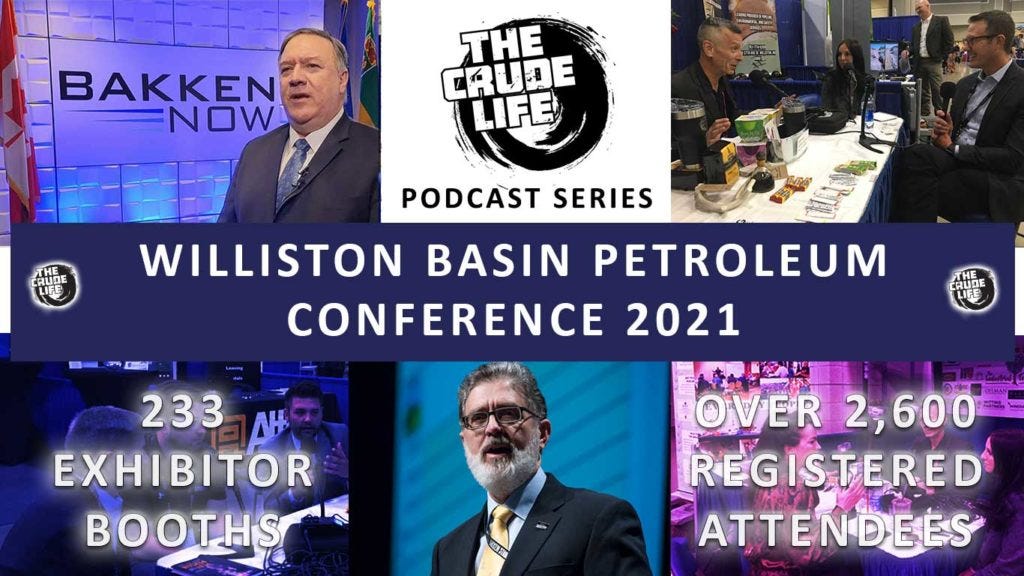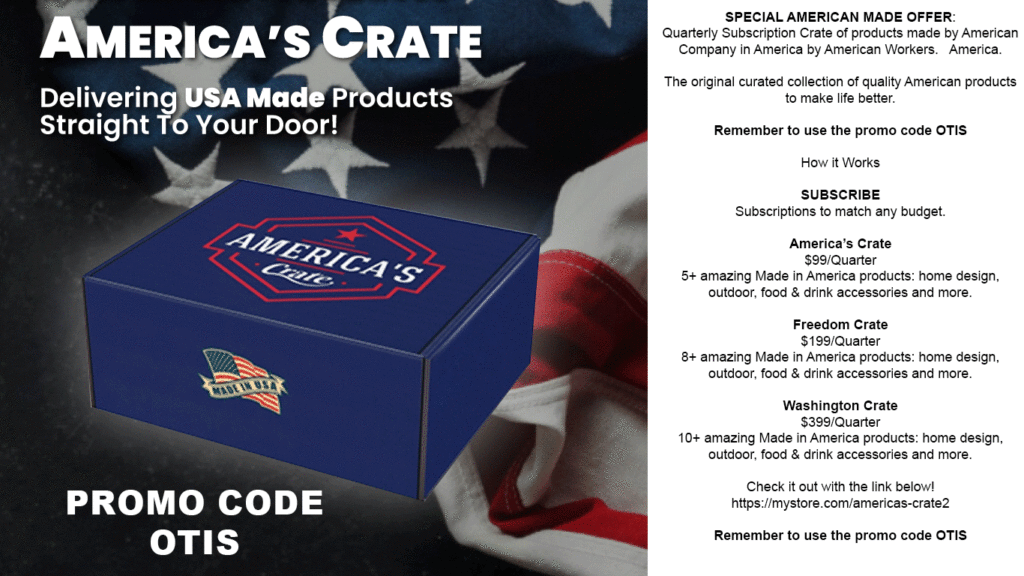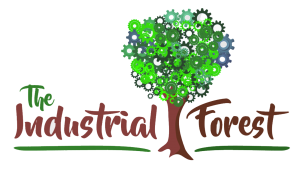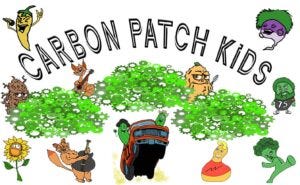Lynn Helms, Director, North Dakota Mineral Resources interviewed by The Crude Life Content Correspondent Genneca Houser
After some brief chit chat about the large shoes that Lynn Helms, the Director of the North Dakota Mineral Resources, fills in North Dakota Oil and Gas, we dove right in to some good information.
Helms began by outlining the phenomenal growth in the industry within the last ten years – until 2020. He talks about measures taken to keep everything leveled out until recovery.
According to Helms, the recovery period has already begun. So although it’s not as big as it was, the outlook is great so far as predicting another ten years of wonderful growth.
“So, we think that we’re gonna’ get really back in business next year and that we can have another decade of phenomenal growth and so I put some challenges out there of some things that people have to do to make that happen.” – Lynn Helms
The Director has some challenges to pose to those in the oil and gas industry to promote the kind of growth that he’s looking at. There are three challenges; the first challenge is to more than double the well count in North Dakota by getting the wells that should be running, up and running. The second challenge is to provide what’s needed (propane, ethane, and etc.), store it, and then export it where it needs to go. From what Lynn Helms was saying, North Dakota is “all in” when it comes to building policy and legislation around how to help the goals. Then, the third challenge is to double the amount of oil recovered over the next ten years.
“We’re going to invest in research and field trials and figure out how to do what they call Enhanced Oil Recovery, which we think can double the amount of oil that we recover from the rock, and that’d be over the next ten years. Hopefully there’s more to come behind that.”
That, of course, led into a great discussion about Enhanced Oil Recovery (EOR) in North Dakota. There are several research projects on the use of Co2, according to Lynn Helms, and these projects could potentially lead the entire state to becoming carbon neutral. Specifically when we’re talking about using the captured carbon from the coal fired power plants and the Co2 being transported into the state for Enhanced Oil Recovery. There are multiple ways of accomplishing this being studied that carry few successes at this time, but still offer much hope. There has been some testing on re-injecting the Co2 directly back into the gas that comes out with the oil, and even some testing with different methods of nanotechnology. There’s even a research project using nanotechnology to treat the wells, and it’s currently in field trials.
“No, we’re pushing all the buttons – not just Co2.” – Lynn Helms, NDMR
Nanotechnology sounds like tech straight out of the future, but as it turns out they may have found a way to utilize it in such a way that would increase oil production in ways that no man is able. Apparently these little “bots” are so small, less than 20 nanometers in size, that they can fit into the pores of the shale where they will then release whatever they are carrying on command. What happens then? They deteriorate back into the earth through a fermentation process.
“They are made of stuff that degrades, so they completely degrade to nothing.”
There is a question about what would happen to the studies to advance carbon use if a climate tax were to be implemented. Lynn Helms believes the idea of a carbon tax is retro-active and says that North Dakota already has the right method to incentivize people to leave a smaller carbon footprint. He believes that if money is invested back into the positive programs it would lead people to make healthier decisions, rather than taxing people and limiting the capital for these programs to use at a critical time of growth.
“If you tax the money away from the company, how then do you get them to raise capital and invest in what they need to be doing 7, 8 years from now? … I think they can invest that money more wisely than our government can, and I work for the government, but the government rarely makes wise investments…”
Sometimes the government can do good things, though. Lynn Helms seemed pretty happy with the idea of having a government partner to help get industry investment to help the state get to carbon neutral. The Clean Sustainable Energy Authority was born as a way to get the research, funding, and policies done to put the Governor’s goal in action. Calling North Dakota a “geologic jackpot,” Lynn says the landscape gives a unique opportunity to store and utilize Co2 in a way that will make North Dakota a carbon negative state in time.
“It’s not easy, but our state has worked hard to put the tax and regulatory and investment policies in place to partner with our industry; to provide them the carrot and the assistance to get there.”
Genneca Houser
Alright, we are here with Lynn helms who is the director of the North Dakota Department of mineral resources up here. And actually I know I know you you wear multiple hats because you, let's see, you're the director of for, for the marketing as well, aren't you?
Lynn Helms
Well, we part of our job is to promote the production of the resource and we, you we have a promotional arm which is the Geological Survey and their job is to identify valuable mineral resources in the state and promote them to investors to come and drill or mine or extract those minerals and boost our economy. So yes, I, I straddle that fence. I have a geological survey that does that publication and promotion and I have an oil and gas division that does regulation.
Genneca Houser
You've got, you've got a large role to fill them in the energy industry for North Dakota is what that means.
Lynn Helms
It feels like it sometimes.
Genneca Houser
Well the individuals here were lucky enough to get to hear you speak just a little bit ago, but I thought maybe if you'd be interested you could share with our listeners what you were talking about in regards to North Dakota oil and gas.
Lynn Helms
Sure. So we just came off a decade of phenomenal growth where North Dakota went from number eight in production to number two went from 100,000 barrels of oil a day to 1.5 million barrels a day and grew the state population, fourth highest growth rate in the nation between the 2010 and 2020 census. So we saw places like McKenzie County Watford City triple their population over the last 10 years and all of that because of people investing in oil and gas and moving to North Dakota to
make that happen. So then 2020 happened. Uh, and uh, everything came to a screeching hall over a very short period of time. And uh, so we partnered using Cares Act money, partnered with the industry to keep a core group of people employed and working through the last six months of 2020 Until things could begin to recover. And now they have, so we talked about the fact that we're coming out of the pandemic.
We're back to 18 drilling rigs. We have nine frack crews running, uh, that's not nearly enough, uh, where companies are getting back on their feet in terms of profit and producing capital and just visiting and networking with folks here at the conference, finding out that our oil and gas operators are making big plans to go back to investing next year.
So we think that we're gonna get really back in business next year and that we can have another decade of phenomenal growth. And so I put some challenges out. There are some things people have to do to make that happen.
Genneca Houser
Oh, what, what were your challenges?
Lynn Helms
So the first one was that they've already got 14,448 uncompleted wells on the books, well that they've drilled and not completed or wells that they plan to drill, when when budgets return Orwell's that legally, I've signed an order approving the drilling of that. Well, they just haven't permitted it yet or, or drilled it yet. So compare that to the fact that we only have 14,095 already drilling and producing, it's more than double.
So over the next decade they need to more than double the well count in North Dakota. That's a big enough job in itself. That's gonna bring enormous natural gas production. And one of the things that our state is all in on is putting the policies in place and getting the investment here to add value to that to, to break out all the products and store them provide propane to North Dakota and South Dakota farmers to dry their grain, provide ethane to a plastics industry, uh, to make
plastic, uh, and use some of that to make electrons uh, to do things like charge your iphone across the country and exported as electrons. So that's, that's number two. And then the third challenge is that we're only recovering about 10 to 15% of the oil that's in the pocket. So even with everything we've done, we're leaving 85 to 90% of the oil in the ground that out of every 10 barrels 8.5 to 9 is staying down there.
And so we're going to invest in research and field trials and figure out how to do, what they call enhanced oil recovery. Which we think can double the amount of oil that we recover from the rock and that'd be over the next 10 years. Hopefully there's more to come behind that
Genneca Houser
you actually um since you brought up you are, I had been curious. I had seen that there are three main methods that are generally currently in use. And then I had seen that Russia was developing a plasma blast of some sort and I'm not really sure. But I was curious to know what kind of what kind of methods is. Are you we strictly using a gas lift the Ceo to method or?
Lynn Helms
No, not at all. Uh There are several research projects on the use of C. 02. And you heard the, I don't know if you were here yesterday to hear the governor's challenge but his challenge is to utilize C. 02 from our coal fired power plants and also C. 02 coming into the state for enhanced oil recovery which will allow us essentially as a state to become carbon neutral.
Which which is an awesome challenge and an awesome goal. And so that's one of the methods that's being studied. There's been some experiments and tests and research done with that. No successes yet. Uh So that but that is that is one of the primary forms that we're looking at another form is to actually re inject the gas that comes out with the oil and that's been done successfully in south texas.
And so there's been one or two tests of that in North Dakota. Some near misses, but no success is yet. And then we have um some professors and grad students at University of North Dakota that are working on a nanotechnology to deliver something in into the reservoir, whether it's C. 02 or a surfactant or something to recover more oil. And then finally, we have funded a research project that's now in field trials.
Uh local North Dakota company has come up with a uh biologically produced through a fermentation process, nano surfactant that we can treat the wells with. It looks like it's going to allow us to recover a lot more oil. So now we're pushing all the buttons, not just so to
Genneca Houser
see that that's, that's, wow, that is quite a lot of innovative techniques. So with, with the nanotechnology, just because this was what popped into my head is so it's kind of like a timed release and that's what you're saying, you send the nano bots or whatever down hole and then when they are in place they release whatever the payload is, I guess the
Lynn Helms
Yeah, exactly. So the pore spaces in the bacon are very, very, very small. They're less than 20 nanometers in size so you couldn't, you know, a lot of them, you could barely get a human hair in there. And so delivering something into there is, is difficult and then having it do its thing.
So yeah, these are intended to be small enough to get into those little pore spaces and then much like the gel cap around your medicine to release it after it's in there, not in the well bore, but after it has actually gotten into these small nano pores in the rock itself, what
Genneca Houser
happens to the nanobots after they've given their payload? I mean, are they, are they made of,
Lynn Helms
they are made of stuff that degrades so there
Genneca Houser
so it just goes right back into the environment harmlessly.
Lynn Helms
Exactly. They attach themselves to the rock and then over time and with temperature they just go back to what they were before they were fermented.
Genneca Houser
Alright, alright, well that's kind of cool. Um This actually brings me around to this potential carbon tax with all of the research going on here in North Dakota. Should the administration put a tax on carbon, what would that do for research here in North Dakota?
Lynn Helms
So one of things about a carbon tax is, it's it's sort of uh whatever I say, it's retroactive and it's punitive uh in that it takes capital away from the companies, we think a better approach is to partner with the industries that are already working on this and successful uh to some measure and you know provide grant money and encourage capital investment into these kind of technologies as opposed to taxing people for not using the technologies um It takes a lot of capital to do one
of these things. Um a billion dollars worth of capital to capture the C. 02 off of coal fired power plant and and deliver it to an oil field. And so if you tax them I guess you know that's a stick and you can you know punish them for not doing that. North Dakota's approach on the other hand is to take earnings from the legacy fund and partner with them in
loaning them money at low interest and in investing in research on ways to do it economically. So so that they'll have a different reason, a different driver for doing it.
Genneca Houser
Certainly there's actually, but I've listened to quite a few speakers talk on different parts of what's happening in the energy industry to try and give a hand up and make it you know get it back to full strength again I guess if you will. So what, so I guess with with the possibility of this this climate tax looming. Do you think that affects the outlook the future outlook for the industry here in North Dakota at all. Or are you still feeling pretty optimistic? I mean
Lynn Helms
well we're still very optimistic but um It does create a lot of uncertainty and anxiety, particularly amongst the smaller companies and especially the smaller companies that ended up going through a Chapter 11 last year because of the pandemic. You know they're just getting back on their feet, and and so it would take capital away from them at a time when they desperately needed to, to invest in these improvements.
We've talked about. I don't know how, you know, if you tax the money away from the company, how then do you get them to raise capital and invest in what they need to be doing 7, 8 years from now?
Genneca Houser
That's a very good question. Well, I guess I know that.
Lynn Helms
I think, I think that they can invest that money more wisely than our government can and I and I work for the government, but the government rarely makes wise investments and these companies can see what they need to be investing that money in order to move themselves forward into a carbon neutral world.
Genneca Houser
Collaborative efforts seem to work best.
Lynn Helms
That seems to be that is the approach that North Dakota wants to take in all of this.
Genneca Houser
That's, that's fantastic. Is there anything that you would specifically like to let people know about? Is there something of importance that you think should be shared?
Lynn Helms
Yeah, I want to really talk about the, some of the policies that our legislature put in place this last, we just finished a legislative session and one of the things that they did was to create a government partner for industry investment in getting to carbon neutral. It's called the clean sustainable Energy Authority. And this group is going to start out with $25 million and also be able to loan $250 million to companies to do the kind of research that we're talking about to move
towards the goal. And the challenge that the governor put out there, which is um, Let's let's get the investment and the research and the policy is done to make North Dakota-carbon neutral in 10 years and carbon negative in 20 bold
Genneca Houser
statements definitely possible with what's happening here in the well,
Lynn Helms
as the governor said, we hit the geologic jackpot. So we have the oil resources, we have the coal resources, we have the geology to store seal to and so we can actually, and and we have the soil science to do it as well in the red river valley and in the green pastures out in western North Dakota.
So what we need to do is pull all of that together. And actually, we're looking to a future where C. 02 from other states that weren't blessed with our geology comes here to to be uh disposed of or or stored out of the atmosphere, turning North Dakota into into a carbon negative state.
Genneca Houser
Actually, Lieutenant Governor Sanford had mentioned something about that yesterday stating that North Dakota seems to use more CO two than what they're even capturing. So it's necessary to pull it in. So that's that's that's really that's what we're
Lynn Helms
Going to need seo two here. Yeah,
Genneca Houser
Okay. That's exciting. Very exciting.
Lynn Helms
So that's what I want. I want to, you know, leave everybody with is the it's not easy. But our our state has worked hard to put the tax and regulatory and investment policies in place to, to partner with our industry, uh, to provide them the carrot and, and the assistance to get their wonderful thank
Genneca Houser
you so much. I really appreciate
Lynn Helms
it. Welcome.
Interview conducted on May 2021
Submit your Article Ideas to The Crude Life! Email studio@thecrudelife.com
About The Crude Life
Award winning interviewer and broadcast journalist Jason Spiess and Content Correspondents engage with the industry’s best thinkers, writers, politicians, business leaders, scientists, entertainers, community leaders, cafe owners and other newsmakers in one-on-one interviews and round table discussions.
The Crude Life has been broadcasting on radio stations since 2012 and posts all updates and interviews on The Crude Life Social Media Network.
Everyday your story is being told by someone. Who is telling your story? Who are you telling your story to?
#thecrudelife promotes a culture of inclusion and respect through interviews, content creation, live events and partnerships that educate, enrich, and empower people to create a positive social environment for all, regardless of age, race, religion, sexual orientation, or physical or intellectual ability.
Sponsors, Music and Other Show Notes
Studio Sponsor: The Industrial Forest
The Industrial Forest is a network of environmentally minded and socially conscious businesses that are using industrial innovations to build a network of sustainable forests across the United States.
Studio Email and Inbox Sponsor: The Carbon Patch Kids
The Carbon Patch Kids are a Content Story Series targeted for Children of All Ages! In the world of the Carbon Patch Kids , all life matters and has a purpose. Even the bugs, slugs, weeds and voles.
The Carbon Patch Kids love adventures and playing together. This interaction often finds them encountering emotional experiences that can leave them confused, scared or even too excited to think clearly!
Often times, with the help of their companions, the Carbon Patch Kids can reach a solution to their struggle. Sometimes the Carbon Patch Kids have to reach down deep inside and believe in their own special gift in order to grow.
The caretakers of Carbon Patch Kids do their best to plant seeds in each of the Carbon Patch Kids so they can approach life’s problems with a non-aggressive, peaceful and neighborly solution.
Carbon Patch Kids live, work and play in The Industrial Forest.
Click here for The CarbonPatchKids’ website
Featured Music: Alma Cook
Click here for Alma Cook’s music website
Click here for Alma Cook’s day job – Cook Compliance Solutions
For guest, band or show topic requests, email studio@thecrudelife.com
Spread the word. Support the industry. Share the energy.






















The Crude Life Podcast: Lynn Helms, Director, North Dakota Mineral Resources